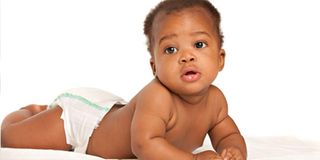Are your son’s testes in good shape?

Undescended testes are associated with infertility if not managed before one year of age. Courtesy photo.
Sadness lingers in most of our relationships and Mary’s was not a unique one. She had been married for three years with no child and this was causing a strain in their once happy marriage. After all, her tests turned out normal, Mary and I suggested that her husband, James, gets examined too. It, however, took months before James could set foot in the hospital.
After a long discussion, with James narrating that he had no issues with his manhood (not that I expected anything different), I started physically examining James before we could proceed for lab tests. When I looked at James’ scrotum, I could tell there was a big problem.
James had “small” testes but that was not a problem to him since he was functioning normally. He, however, had a condition called cryptorchidism – the absence of one or both testes from the scrotum. Any bad news to a man about his sexuality will always bruise his ego. This not only translates into a strain in his relationships but a disruption in all spheres of his life.
Why no testes?
While growing in the mother’s womb, the baby’s testicles are formed in the abdomen and slowly come down during the last months of pregnancy. Sometimes, the baby may be born before they arrive at their destination (scrotum) or the process may get delayed or halted along the way.
James’ situation was very tricky. At above 30, his fertility could not be salvaged. To him, this revelation was not only an end to his sexual life, relationships and marriage, but an end to his life!
Mary was still convinced that something could be done. Therefore, we checked James’ sperm; he had a low sperm count which was also poor quality. This was not surprising because undescended testes are associated with future infertility if not managed in time (before one year of age). The condition also increases risk of testicular injury, testicular cancer and psychological stigma.
Parents, Take note!
Health workers in our countries are so overwhelmed that things such as cryptorchidism are often missed at birth. When you give birth to a baby boy, ask the doctor/midwife to check if your baby has testes in his scrotum. However, if this is not done in the hospital, you can still find out at home.
As a parent, gently touch and lightly press your baby’s scrotum to feel if both testes are in place. In case of any problem, visit a health facility and seek medical help.
Could this have been prevented?
Some babies are generally at a higher risk of getting undescended testes. For example, a baby born before nine months may not have had his testes in full normal shape by the time of birth. With this new lifestyle that involves eating a lot of chips, sausages and other unhealthy foods, alcohol and smoking during pregnancy or passive smoking, many babies are susceptible to the condition. And if there’s a family member with undescended testes, your baby could be at risk too.
However, this does not mean that your baby’s manhood has come to an end. Generally, by the time a baby is four months, the testes will descend on their own but after that, the process may not occur. All James’ mother needed to do if she had discovered this before he was one year was to take her son to a doctor, who could have brought those testes down.
So if you have a little son, please consider pulling those pants down and check him before he ends up in the same tragedy that befell James. As a partner, it also doesn’t hurt for you to check if your man has both testes in his scrotum.
Dr Phionah Atuhebwe is a sexologist
[email protected]




